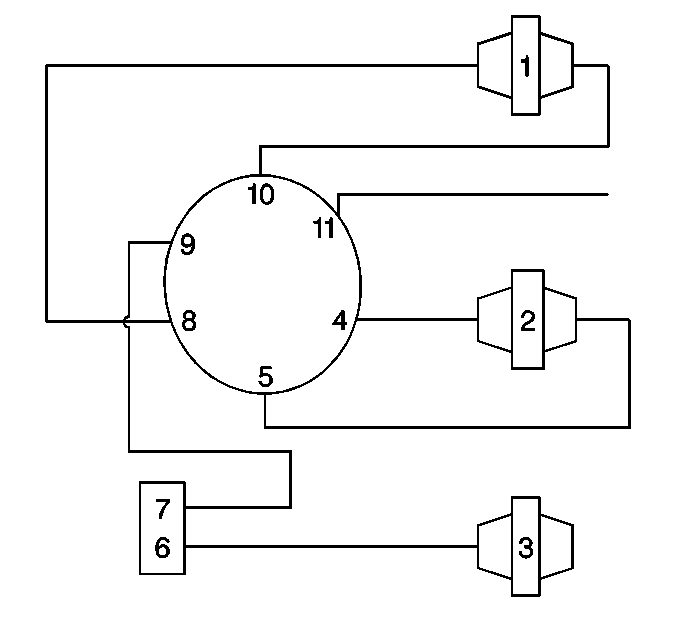Removal Procedure
The vacuum hose harness is located under the instrument panel. One end of the harness attaches to the HVAC control assembly mode switch with one 6-way molded connector. Another end of the harness attaches to the HVAC control assembly recirculation solenoid with one 2-way molded connector.
The remaining harness attaches to the vacuum actuators and the vacuum tank. The violet hose is the supply hose for the vacuum hose harness. The violet hose (11) connects the vacuum tank to the 6-way mode selector. A grey hose supplies vacuum to the vacuum tank. The grey hose extends through the front of the dash. The grey hose attaches to the engine.
- Disconnect the negative battery cable.
- Remove the instrument panel. Refer to Instrument Panel Carrier Replacement in Instrument Panel, Gauges and Console.
- Remove the air distribution ducts as necessary.
- Remove the vacuum hoses at the vacuum actuators.
- Disconnect the vacuum hoses at the following components:
Caution: Unless directed otherwise, the ignition and start switch must be in the OFF or LOCK position, and all electrical loads must be OFF before servicing any electrical component. Disconnect the negative battery cable to prevent an electrical spark should a tool or equipment come in contact with an exposed electrical terminal. Failure to follow these precautions may result in personal injury and/or damage to the vehicle or its components.

| • | The vacuum tank (11) |
| • | The HVAC control |
Installation Procedure
- Connect the vacuum hoses to the following components:
- Install the air distribution ducts as necessary.
- Install the instrument panel. Refer to Instrument Panel Carrier Replacement in Instrument Panel, Gauges, and Console.
- Connect the negative battery cable.

| • | The vacuum tank (11) |
| • | The HVAC control |
| • | The vacuum actuators |
Notice: Use the correct fastener in the correct location. Replacement fasteners must be the correct part number for that application. Fasteners requiring replacement or fasteners requiring the use of thread locking compound or sealant are identified in the service procedure. Do not use paints, lubricants, or corrosion inhibitors on fasteners or fastener joint surfaces unless specified. These coatings affect fastener torque and joint clamping force and may damage the fastener. Use the correct tightening sequence and specifications when installing fasteners in order to avoid damage to parts and systems.
Tighten
Tighten the negative battery cable to 16 N·m (12 lb ft).
